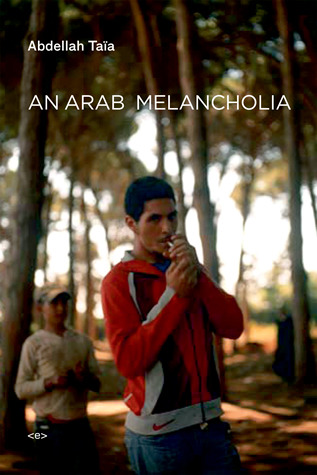Acclaimed as the first openly homosexual author from Morocco, Abdellah Taïa has spent the better part of a decade exploring the difficult topic of queerness in the Arab world. Mimicking the work of other Moroccan expatriates like Abdelkebir Khatibi and Tahar Ben Jelloun, Taïa has also exposed the contentious and violent ideological dialogue between the postmodern West and postcolonial North Africa. Implicit in much of his prose—a medley of epistles, diary entries, cinematic and musical allusions, and medieval poetic citations—is the promise of writing as a means of speaking homosexual love from within and outside of the Arabic language and the law of Islam. The fourth entry in Taïa’s autobiographical cycle, An Arab Melancholia is a slender bildungsroman that marries transgressive sexual confessions to laconic spiritual poetry, and is an intriguing meditation on whether silenced desires can find liberation through more-mystical forms of expression.
Taïa’s earliest recollections of sexual love begin with the threat of an existential silence: his own death. Lured into a neighbor’s home by a local gang of delinquents, the young narrator is targeted as the object of a gang rape, only to be saved by the local mosque’s call to prayer. The boys’ emasculating taunts of “Leïla,” however, inflame his imagination, evoking the medieval Arab yarn of the shepherd’s daughter whose beauty drives the local poet, Majnoun, mad with desire. The scene is further complicated by Abdellah’s love for the gang’s leader, Ali, whose sexual violence he both detests and silently covets. Determined to openly speak of himself as gay, Abdellah prepares a dramatic monologue on the street before Ali’s home, but his proclamation is cut short when he inadvertently touches a live electric pole.
As Taïa tells it, this dizzying fall into and out of sudden death radically transforms his desire to speak—or rather to speak out—and with this conversion comes a religious identification with his own homosexuality. Abdellah is no longer just queer: he is a now a poet of love, a seer possessed by jinn, a resurrected body. “My life took a whole new direction,” he recalls. “Something new, something interior and secret.” Throughout the remaining narrative, which takes elliptical leaps of more than twenty years as the maturing author travels between Morocco, Egypt, and Paris and takes lovers from East and West, Abdellah finds that he is able to express his new identity by writing exclusively in French rather than Arabic.
The titular melancholia manifests, for Taïa, in a writing style that is more “silent” than expressive. As he struggles with the contrary impulses of sexuality and religion as prescribed in contemporary Arab mores, he turns toward a cinematic vocabulary replete with references to the divas of Arab and Bollywood cinema, Moroccan and Egyptian chanteuses, and the melodramatic West of Fassbinder and Sirk. From these fragments he seems to invent a kind of silent world that, in its undifferentiated images of bodies and desires, resists the conventional Western imperative of speaking truth as an announcement of political or sexual identity.
The centrality of cinema in Taïa’s language of self-expression becomes explicit in a sequence at Cairo’s Royal El-Guidida theater, where he observes an auditorium filled with aging male bodies pleasuring one another beneath the nimbus of the screen. “The moving image of the flesh,” he muses, invokes “the Arabic language as a space of origins, a real mental space where I dared to redefine who I was, dared to talk about everything, reveal everything and one day, write about everything, everything. Even forbidden love. And call it by a new name. A name that had dignity. As if it were a poem.”
The final section of An Arab Melancholia, titled “Writing,” is a portion of Taïa’s diary that recounts a tortuous romantic relationship with an Arab sculptor named Slimane. It takes place in a polyglot neighborhood of Paris, where the lovers’ language finds new articulation, and indeed the journal is surprisingly loquacious and expository—as though Taïa, experiencing his deepest passion and desire, has turned his silence not toward a politicized gay identity but into an effusively mystical prose. It also allows him to return to the language of his homeland without shame or confusion. “From the start, we wrote sitting next to one another, wrote for one another,” he reflects. “Two different men writing as it were from a single pen… [by] writing of love at the same time.”





